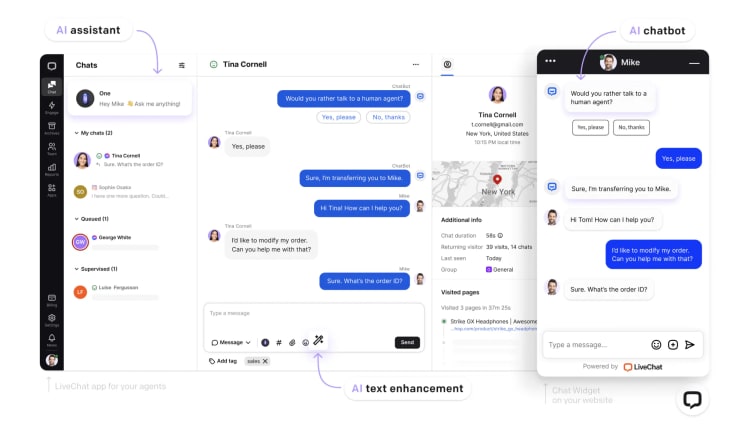Showing top 0 results 0 results found
Showing top 0 results 0 results found
How Do Marketing Agencies Make Money | Top Strategies

Ever wondered how other marketing agencies generate revenue and sustain their operations? Curious about the various income streams that keep these agencies thriving?
Understanding the financial blueprint of marketing agencies can provide some inspiration - regardless of whether you're a business owner seeking to maximize your marketing budget or an aspiring agency founder.
Let’s explore the diverse ways marketing agencies make money, shedding light on their primary and additional revenue streams. We’ll also discuss the value-added services they offer and their challenges in maintaining profitability.
Dive into it and seize opportunities to thrive in today's dynamic market!
👉 Read 35 Best Reseller Programs You Can Join Today
Overview of marketing agencies
Marketing agencies are specialized firms that provide services to help businesses promote their offerings, reach their target audiences, and achieve their marketing goals.
These agencies leverage their expertise in various marketing strategies and tools to execute effective campaigns that drive brand awareness, customer engagement, and sales.
The types of agencies include:
1. Digital marketing agencies
- Focus on digital channels: search engines, social media, email, and websites.
- Services: SEO, PPC advertising, social media management, email marketing, content creation.
- Goal: Establish a strong online presence and connect with customers digitally.
2. Traditional marketing agencies
- Specialize in offline tactics: print ads, TV/radio commercials, direct mail, and billboards.
- Reach audiences through non-digital media.
3. Full-service agencies
- Offer comprehensive marketing services covering both digital and traditional tactics.
- Handle strategy development, creative design, media buying, and campaign execution.
- Provide a one-stop solution for streamlined marketing efforts.
A perfect Partner Program for digital agencies
Offer your clients our customer service products, be rewarded and supported along the way!

Primary revenue streams
Marketing agencies rely on multiple revenue streams to sustain and grow their business. Retainers provide consistent income and long-term client relationships, while project-based fees offer flexibility and potentially higher payments for specialized work. Agencies utilize both models to stabilize their income.
1. Client retainers
A retainer agreement is a long-term contract between a marketing agency and a client. The client pays a fixed fee regularly (monthly, quarterly, or annually) for a set of services over some time.
Rather than paying for specific projects, clients pay for continuous access to the agency’s resources and expertise. This payment structure is particularly popular for ongoing services.
Retainers provide a predictable and consistent income stream, allowing agencies to manage their finances better and plan for future growth. The agreements also foster long-term client relationships, offering opportunities for deeper collaboration.
Services covered under a retainer agreement can vary depending on the client’s needs but typically include:
- Ongoing social media management: Regular posting, community engagement, and paid advertising.
- Content creation and marketing: Blog writing, video production, and email campaigns.
- SEO and digital strategy: Continuous optimization of a client’s website and search engine rankings.
- Analytics and reporting: Regular tracking and reporting on the performance of campaigns, along with strategic recommendations.
- Email marketing: Setting up and sending periodic newsletters or promotional emails.
2. Project-based fees
Unlike retainers, project-based work involves a one-time fee for specific, often short-term, projects with clear deliverables and deadlines.
The scope of work is defined at the beginning, with a set timeline and agreed-upon deliverables.
The projects are typically more focused. Once the project is completed, the contract ends, though there may be opportunities for follow-up work or new projects in the future.
Some examples of common projects include:
- Website redesign: Creating a brand-new website or overhauling an existing one to improve user experience, aesthetics, or functionality.
- Advertising campaigns: Designing and executing a paid ad campaign on platforms like Google Ads or Facebook.
- Brand identity development: Developing a new logo, brand guidelines, and visual identity for a client.
- Event marketing: Planning and promoting events, whether online or in-person, to engage customers or promote products/services.
Project-based work allows advertising agencies to take on various tasks, keeping the work fresh and engaging for both the agency and the client. Also, projects, especially complex ones, can command higher fees due to the specialized skills and time involved.
However, since project income is not recurring, agencies face periods of uncertainty when projects end, especially if new contracts are not secured in time. Agencies must continuously pitch and win new projects, which requires significant time and effort.
Additional revenue streams
Marketing agencies often diversify their income by tapping into additional revenue streams beyond their primary offerings. These streams help agencies create more consistent cash flow while also allowing them to scale their business. They include:
1. Commission-based revenue
Many marketing agencies earn commission-based revenue by acting as intermediaries between brands and other marketing services, such as media buying, influencer marketing, or affiliate marketing.
When they facilitate a sale, a partnership, or a promotion, agencies typically earn a commission as compensation for driving the results.
Agencies specializing in affiliate marketing can also earn commissions by promoting third-party products or services. When a lead or sale is generated through their marketing efforts, the agency receives a commission based on the affiliate program's terms.
A notable example of a commission-based program is the Text Solution Program. Text provides communication tools such as ChatBot, HelpDesk, and LiveChat, which help businesses engage with customers through live chat support.
As part of the program, agencies are offered resources like free demo accounts, personal onboarding, educational materials, and a Partner App to manage customer licenses and track earnings.
As the Solution Program members progress through the program's bronze, silver, and gold tiers, they unlock more benefits, such as co-marketing opportunities and priority support.

2. Performance-based fees
Performance-based fees are revenue models where the agency is paid based on the results they achieve for a client. This could be tied to specific outcomes like lead generation, sales conversions, or other measurable goals.
The key distinction here is that the agency’s compensation depends on the campaign's success, making it a riskier but potentially more rewarding model for both the agency and the client.
Agencies and clients usually agree on performance metrics to ensure clear expectations before the work begins. These could include:
- Cost per lead (CPL): The amount an agency earns for each lead generated.
- Cost per acquisition (CPA): A commission for each sale or conversion the agency drives.
- Return on investment (ROI): A percentage of the revenue or profit generated from the agency’s marketing efforts.
Tracking performance is typically done through various tools and software platforms that monitor website traffic, email campaign results, or conversion rates. Data analytics and marketing automation platforms, such as Google Analytics or HubSpot, are commonly used to track these metrics in real-time.
3. Consulting fees
Consulting is another lucrative revenue stream for marketing agencies. In this model, agencies provide strategic advice to clients without necessarily executing the work themselves.
Agencies charge fees based on their expertise in marketing strategy, brand positioning, consumer behavior analysis, and other specialized knowledge areas.
The key difference between consulting and execution is that consulting involves providing high-level guidance and advice, while execution involves implementing that strategy.
For example, a consulting agency may advise clients on optimizing their sales funnel, but it’ll be separate from the actual development of landing pages, email sequences, and follow-up campaigns. Consulting fees are often charged by the hour or per project and can command high rates due to the expertise required.
4. Training and workshops
Many agencies also generate revenue through training and workshops, offering educational services to clients or even other agencies.
It could involve training client teams on digital marketing best practices, conducting workshops on SEO or social media marketing, or providing in-depth sessions on analytics tools.
The examples include:
- In-house workshops: Agencies might host workshops for businesses to help them understand how to use marketing tools or develop their marketing strategies in-house.
- Online courses: Some agencies create courses to help marketers learn key skills, such as search engine optimization, content marketing, or paid advertising.
- Certifications: Offering certification programs can add value to the training and help clients demonstrate their marketing expertise.
4. Software and tools
Digital agencies specializing in technology and digital marketing may develop proprietary tools like content management systems (CMS), customer relationship management (CRM) software, or automation tools. Once developed, these tools can be licensed to clients or even sold to other marketing agencies.
Licensing agreements can provide a consistent revenue stream without ongoing project work and often offer long-term financial benefits.
The agency may charge clients a monthly or annual fee for access to the tool, with the potential for recurring revenue as clients renew their subscriptions.
In our Partner Program, you can offer your audience three powerful tools for customer service and sales: LiveChat, ChatBot, and HelpDesk.
Each tool specializes in a unique area, but they all share one goal: helping business owners chat, support, and sell more.

Value-added services
In addition to core services like SEO, PPC, and social media management, marketing agencies often offer value-added services. They can differentiate an agency from its competitors, allow for higher pricing, and deepen client relationships.
1. Creative services
High-quality creative is one of the most significant value-added services an advertising agency can offer. Creative services include a wide range of activities, such as:
- Graphic design: Visual assets like logos, branding elements, advertisements, and infographics represent the client’s brand identity.
- Video production: Engaging video content, whether for social media, ads, or website use, that captures attention and communicates key messages effectively.
- Copywriting: Writing persuasive, clear, and on-brand content for blogs, websites, ad copy, email campaigns, and social media posts.
The creative assets an agency produces are often the first thing a consumer will interact with, making them crucial to a campaign's success.
Creative agencies that excel at these services often build long-term relationships with clients, as businesses recognize the value of professional, eye-catching content that resonates with their target audience.
👉 Read How To Write A Powerful Product Review in 8 Simple Steps
2. Data and analytics
In today’s data-driven world, offering advanced reporting services has become a key differentiator for marketing agencies. Clients expect agencies to provide data-backed insights demonstrating their campaigns' effectiveness.
The services typically include:
- Campaign performance reporting: Detailed reports on campaigns performing against KPIs such as click-through rates, conversion rates, and ROI.
- A/B testing and optimization: Running experiments on various campaign elements (e.g., email subject lines, landing page designs) to determine which version performs better.
- Customer insights and segmentation: Using analytics tools to segment audiences and personalize campaigns based on behavior patterns and demographics.
Data is critical in helping agencies and clients make informed, evidence-based decisions. It allows businesses to shift from intuition-based decisions to data-driven strategies that are proven to work.
3. Technology integration
As businesses increasingly rely on technology, agencies can add value by offering technology integration services. This involves setting up and managing marketing automation tools and CRM systems that help clients engage with leads and customers more effectively and efficiently.
Automation tools reduce manual work, freeing up time for businesses to focus on high-value tasks. Also, with the right tech stack, businesses can scale their marketing efforts without a proportional increase in resources or effort.

Diversifying income streams
As marketing agencies grow, diversifying income streams is one of the most effective strategies for long-term stability. By expanding their service offerings, agencies can create more income opportunities, reduce risk, and offer clients a broader range of solutions.
1. Expanding service offerings
Marketing agencies can enhance their income potential by branching into new services that complement their existing offerings. For example:
- Public relations (PR): Agencies can add PR services such as media relations, press releases, and crisis management. PR helps businesses build their reputation and manage public perception.
- Event marketing: Organizing corporate events, product launches, or trade shows can attract new clients. It also offers opportunities for additional fees from event planning, sponsorships, and logistics.
- Influencer marketing: Agencies with experience in digital marketing can expand into influencer marketing campaigns, managing collaborations between brands and influencers to generate content and drive engagement.
Diversifying services helps agencies reduce the risk of depending on just one source of income. It also smooths out revenue fluctuations, especially if some services are seasonal or subject to market changes.
2. Partnering with other agencies
Agencies can also diversify their income by forming strategic partnerships with other agencies. These alliances can be particularly beneficial for agencies looking to tap into new markets or skill sets they may not possess internally.
Through partnerships, agencies can collaborate on larger projects, share resources, or offer clients a more comprehensive suite of services.
For example:
- A digital marketing agency might partner with a PR agency to offer clients an all-encompassing marketing strategy that combines online and offline efforts.
- A creative agency could collaborate with an ad agency to create high-quality content and manage ad placements, resulting in a complete marketing solution for clients.
Let's join forces!
Offer our products to your customers and provide services around them with your own margin.

Challenges and considerations
While diversifying income streams can significantly enhance an agency's financial health, you may face several challenges in day-to-day operations. Let’s explore them along with strategies for mitigation.
1. Client acquisition and retention
Attracting and retaining clients is a primary concern for marketing agencies, especially as competition grows. Here’s how to ensure a strong client base include:
- Brand identity: Agencies with a clear, consistent brand message and a portfolio of successful projects are more likely to attract high-quality clients.
- Referral programs: Encourage existing clients to refer new businesses through rewards or discounts. Word-of-mouth recommendations often carry more weight than traditional advertising.
- Content marketing: Offering valuable content, whether through blogs, webinars, or social media. It can position an agency as an expert in its field, helping attract leads organically.
- Personalized communication: Build strong relationships through regular check-ins, tailored marketing strategies, and transparent communication. Make your clients feel valued, as it contributes to long-term retention.
2. Pricing model
Pricing is often one of the most difficult aspects of running a marketing agency. Setting prices too high can price out potential clients, while pricing too low can undermine the perceived value of the services provided. Strategies for determining competitive pricing include:
- Market research: Analyzing competitors’ pricing models to understand what the market can bear. Agencies should also consider their costs, expertise, and value proposition.
- Value-based pricing: Pricing based on the value delivered to the client (rather than hourly rates or fixed costs) helps align compensation with client success. For example, if an agency generates $1 million in revenue for a client through a campaign, it may charge a percentage of that revenue as its fee.
- Flexible pricing models: Offering clients multiple pricing options, such as project-based, retainer, or performance-based models, allows them to choose the best fit for their budget and needs.
Finding a balance between profitability and the value clients perceive is crucial. Charging too little may lead to burnout for agency staff and lower profit margins while charging too much can alienate clients.
Not sure if your pricing truly protects your margins? Before you quote the next retainer or scope a project, run your numbers through our [profit margin calculator](https://partners.livechat.com/profit-margin-calculator/). It shows gross, operating, and net margins from your inputs in seconds, so you can price confidently, spot leakages, and keep profitability front and center.
Well-calibrated value-based pricing models that reflect the agency’s expertise, the results clients can expect, and market rates are essential to achieving long-term profitability.
3. Scalability
Scaling a marketing agency presents unique challenges, especially regarding operations, team management, and client expectations. Some of the key challenges include:
- Hiring and training: As the agency grows, you must hire the right talent. It’s essential to bring in skilled professionals while maintaining company culture.
- Quality control: Consistent quality becomes a must as the client base expands. Agency leadership must implement effective training and quality assurance processes to ensure that every project meets high standards.
- Resource Allocation: As demand increases, you need to manage resources effectively. Agencies must streamline workflows, automate tasks where possible, and delegate responsibilities to prevent overextension.
By implementing scalable processes and systems, agencies can grow without sacrificing quality or client satisfaction. For example, tools like Asana or Trello allow agencies to manage multiple clients and projects simultaneously, ensuring that deadlines are met and resources are allocated effectively.

Conclusion
Marketing agencies generate revenue through multiple income streams to meet the diverse needs of their clients. From client retainers to project-based fees, agencies utilize multiple approaches to maximize profitability.
As the marketing industry evolves, emerging trends like AI-powered marketing tools, influencer collaborations, and advanced automation solutions will open new revenue avenues.
Programs like the Text Solution Program offer agencies opportunities to partner in customer service technology, further diversifying income.
To remain profitable, agencies must stay adaptable and embrace innovation in service offerings and revenue strategies. The future of marketing is dynamic, and those who evolve with the times will thrive.
How is your agency adapting to industry changes? Share your thoughts or strategies for future-proofing your business in the comments!


